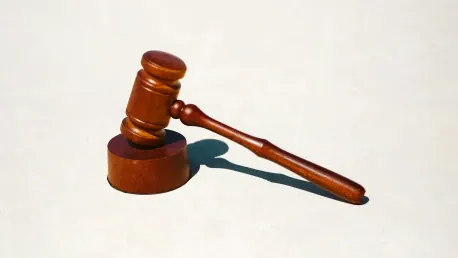Avon Products Inc., once a powerhouse in the beauty industry, has recently taken the extraordinary step of filing for Chapter 11 bankruptcy protection. This move has left many wondering what led to this drastic decision by a company with a rich history and a global presence. Let’s delve into the reasons behind Avon’s bankruptcy filing, the sequence of events leading up to it, and the implications for its future.
Avon, known for its extensive range of beauty and personal care items such as cosmetics, skincare, and perfumes, has faced numerous financial and legal challenges over the past few years. Despite ceasing its North American operations in 2016 to concentrate on its international business, Avon’s non-operational U.S. holding company has now sought Chapter 11 protection. This decision primarily stems from the financial strain caused by numerous lawsuits alleging that Avon’s talc-based products were contaminated with harmful substances.
Background and Current Status
Legacy and Transformation
Avon’s journey from a renowned beauty brand to a company struggling with financial challenges is significant. The legacy of Avon, built on its innovative direct-selling model and iconic product lineup, faced a downturn due to evolving market dynamics and internal inefficiencies. Avon’s direct sales force, consisting predominantly of independent representatives, was once a cornerstone of its success but could not keep pace with shifting consumer behaviors and the rise of online shopping.
Avon’s decision to halt North American operations in 2016 marked a shift in focus toward its international markets, hoping to leverage its brand equity in regions like Latin America and Asia. However, the shadow of litigation regarding its product safety persisted, eventually necessitating the Chapter 11 filing for its U.S. holding company. This strategic move was seen as a way to manage its financial strains while aiming to revive its global presence and competitive edge in an increasingly crowded market.
Financial Struggles and Legal Battles
The primary catalyst for the bankruptcy filing has been the deluge of lawsuits alleging that Avon’s talc-based products were contaminated with cancer-causing substances. These legal battles have not only tarnished Avon’s reputation but also placed severe financial pressure on the company. The mounting legal fees and potential settlements have weighed heavily on Avon’s financial stability, pushing the company toward bankruptcy protection as a strategic respite.
John Dubel, chair of Avon Products, elaborated on this decision, emphasizing that the bankruptcy filing, coupled with the planned sale of non-U.S. operations, aims to optimize the asset value and manage financial obligations effectively. This restructuring is designed to alleviate fiscal stress while ensuring the continuity of international operations. Avon’s strategy includes liquidating its non-core assets and refocusing on areas where it has stronger market potential, although the path to recovery remains challenging.
Strategic Measures and Leadership
New Leadership and Vision
Kristof Neirynck, who took over as CEO earlier this year, has been at the forefront of redefining Avon’s strategy. Neirynck has focused on modernizing Avon’s international business approach and revitalizing its brand to restore faith among stakeholders and the consumer base. This includes reimagining the direct selling model to better align with contemporary market expectations and drive growth. Embracing digital transformation, Avon aims to integrate e-commerce solutions and digital marketing to enhance the customer experience.
Despite the bankruptcy, Avon’s international operations remain undisturbed. The company continues to thrive with nearly 2 million representatives worldwide, reflecting resilience and commitment to its global markets. These representatives form the backbone of Avon’s sales force, providing a direct link to consumers and helping to maintain brand loyalty. Neirynck’s vision includes bolstering this network through innovative training programs and support systems designed to empower representatives and drive sales growth.
Sale of Non-U.S. Operations
A pivotal component of Avon’s strategic response involves the sale of its non-U.S. operations to Natura & Co., a Brazilian firm that acquired Avon in 2020. This transaction, valued at $125 million through a credit bid, is subject to a court-supervised auction process. The strategic sale aims to streamline Avon’s portfolio, allowing the company to shed non-core operations and redirect its focus toward more promising markets and business opportunities.
Natura & Co. has also committed up to $43 million to support Avon during the bankruptcy proceedings, ensuring liquidity and operational stability until the sale is finalized. This move is seen as a strategic pivot to streamline Avon’s operations and focus on addressing its core markets. By aligning with Natura & Co., Avon hopes to leverage the Brazilian firm’s expertise in the beauty industry and its robust supply chain capabilities to drive future growth and sustainability.
Legal and Financial Implications
Addressing Legal Liabilities
The lawsuits involving Avon’s talc-based products have profound legal and financial implications. Allegations that these products contained cancer-causing substances have led to significant legal costs and potential liabilities. The Chapter 11 filing is aimed at restructuring debt and handling these legal challenges more efficiently, enabling Avon to concentrate on its international markets. This restructuring plan seeks to mitigate the financial impact of these lawsuits and create a more stable foundation for future operations.
This strategic restructuring through bankruptcy will assist Avon in managing its legal responsibilities while minimizing the disruption to its operational activities. By addressing these liabilities head-on, Avon aims to rebuild its reputation, ensuring that future business activities are not overshadowed by past legal issues. This approach also includes establishing a trust fund to handle ongoing claims, providing a structured resolution mechanism that offers some degree of closure to affected parties.
Financial Stability and Strategy
Ensuring financial stability during and after the bankruptcy process is crucial. With the backing of Natura & Co., Avon is poised to navigate through these challenging times with a structured approach to managing its financial obligations. This includes maintaining liquidity and ensuring business continuity across all affected segments. The infusion of capital from Natura & Co. and potential cost savings from operational efficiencies are pivotal in keeping Avon afloat during this turbulent period.
John Dubel has highlighted that these measures are not just about addressing immediate financial woes but also about positioning Avon for sustainable growth in the future. The restructuring is thus seen as a necessary evolution in Avon’s long journey. By adopting a long-term perspective, Avon aims to emerge from bankruptcy as a leaner, more agile company better positioned to compete in the modern beauty landscape.
Impact on U.S. Operations
Separation of U.S. Holding Company
It’s crucial to understand that the bankruptcy filing concerns only the non-operational U.S. holding company and does not impact Avon’s ongoing U.S. operations, which are managed by LG Household & Health Care Ltd. This distinction ensures that Avon’s U.S.-based product lines and sales channels continue to function without interruption, maintaining customer confidence and market presence. The continuity of U.S. operations is vital to preserving brand integrity and sustaining revenue streams.
Continuity in the U.S. Market
Despite the filings, Avon maintains a robust presence in the U.S. market under the stewardship of LG Household & Health Care Ltd. The continuation of these operations underscores Avon’s commitment to serving its U.S. customers and ensuring that the legal and financial restructuring does not disrupt everyday business activities. Crafting a message of stability and resilience to its consumer base, Avon aims to reassure stakeholders that the company’s legacy and market position remain intact.
U.S. Market Strategies
In addition to preserving existing operations, LG Household & Health Care Ltd. is also investing in marketing and product innovation to retain and attract customers. By emphasizing product quality, enhancing the customer experience, and leveraging digital platforms, Avon is striving to counteract any negative perceptions caused by the bankruptcy filing. This multifaceted approach aims to secure its competitive edge in the U.S. market.
Broader Context
Legacy Brands Facing Challenges
Avon’s situation is emblematic of broader trends in the consumer market, where legacy brands face mounting challenges from legal liabilities, financial distress, and outdated business models. To address these issues, established companies increasingly resort to bankruptcy protection as a means of strategic repositioning. This mechanism allows them to restructure debt, divest non-core assets, and reinforce their business models to better adapt to changing market conditions.
Strategic Repositioning
The case of Avon illustrates the intricate balance between legal liabilities, financial management, and business strategy necessary to navigate today’s competitive landscape. By focusing on its foundational strengths and leveraging strategic partnerships, Avon aims to chart a course toward sustained growth. This blueprint can serve as a model for other legacy brands grappling with similar challenges in the global marketplace.
Conclusion
It’s essential to clearly differentiate that the bankruptcy filing pertains exclusively to the non-operational U.S. holding company and has no effect on Avon’s active U.S. business operations, which are under the management of LG Household & Health Care Ltd. This clarification is important to alleviate any potential concerns among customers and stakeholders about Avon’s ability to continue delivering its popular product lines and maintaining its sales networks.
By isolating the bankruptcy to the holding company, Avon’s day-to-day business activities remain unaffected, ensuring there is no disruption in product availability or customer service. This separation is crucial for preserving customer trust and retention, both of which are pivotal for sustaining the brand’s image and market position. Continued smooth operations are also essential for maintaining steady revenue flows, which are the backbone of the company’s ability to innovate and compete in a crowded marketplace.
In essence, while the holding company undergoes the bankruptcy process, Avon’s U.S. network remains robust and fully functional, thanks to the strategic oversight of LG Household & Health Care Ltd. This nuanced situation underscores the resilience of Avon’s core business operations and reaffirms the company’s unwavering commitment to its customers and market position during challenging times. By maintaining operational continuity, Avon safeguards its brand integrity and ensures a stable future.









